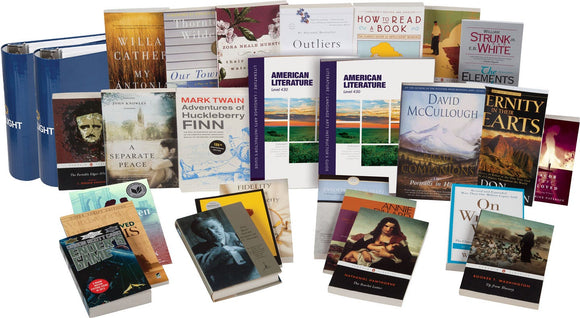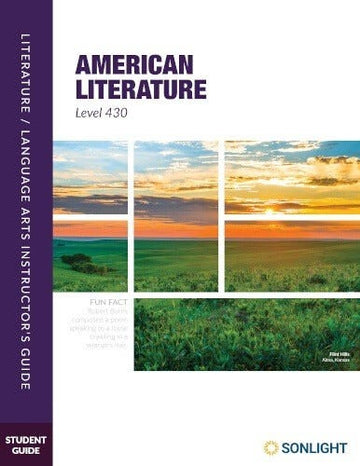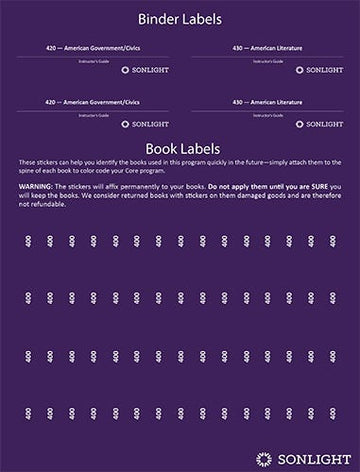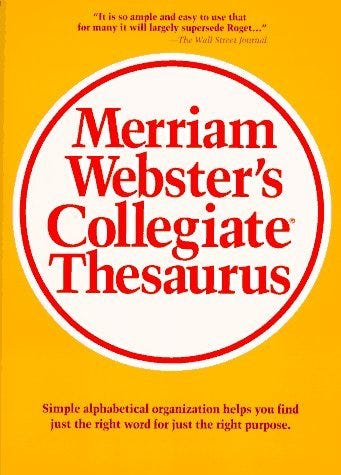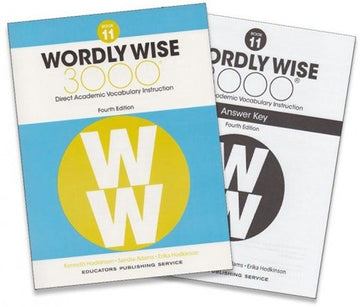Get complete lesson plans, schedule and teaching notes for the entire year. This American Literature Package includes the Level 430 American Literature Parent Guide and accompanying American Literature Student Guide. Package also includes all of the American Literature books for high school scheduled in these guides.
Overview of the Literature
Instructor's Guides
Literature 430 takes learners on a yearlong adventure of independent study. The Literature and Language Arts Student Guide provides daily reading and writing assignments, along with additional notes and questions that reinforce and challenge your student. The accompanying Parent Guide keeps you in touch and on track, so you can come alongside at any point in your student's learning.
American Literature
Once children have achieved basic literacy, they can read for information. That is much of what we read each day: news reports, how-to books, cookbooks. I never go to my cookbook cupboard to figure out the deeper meaning life.
True literature, though, requires more effort, more thought. A novel has the basic, surface-level plot. But what is it saying beyond that?
Mortimer Adler wrote How to Read a Book to help readers read better – to read and understand more than the basic plot. It isn't a fun book to read, the way a fast-paced novel is, but it is informative, and possibly life-changing.
This book serves as the general framework for Sonlight's 430 American Literature course. Rather than choosing a book from each of the major periods ("Pre-Colonial," "Transcendentalism," etc.), and working in chronological order, instead, this course uses my favorite books by American authors and allows Adler's instruction to help read these outstanding works with more understanding and enjoyment.
So, for example, after the schedule assigns Adler's chapter on "How to Read History," the students get to enjoy two-time Pulitzer winner David McCullough's short profiles of fascinating historical characters. (They're incredible.)
After the schedule assigns "How to Read Practical Books," the students look at the classic guide on writing, The Elements of Style, beautifully co-written by E.B. White (author of Charlotte's Web).
After Adler offers suggestions about reading Tragedy, the students read one of the greatest plays of the 20th Century, Death of a Salesman (it won both a Tony and a Pulitzer the year it came out).
How to read autobiographies? Practice on Booker T. Washington's Up from Slavery and the breathtaking missionary biography Evidence Not Seen.
How to read imaginative literature? Practice on Their Eyes Were Watching God, one of the most cheerful portrayals of happily married people in all of literature.
How to read short stories? Practice on five stunning shorts by Wendell Berry.
And, at the end of the year, after Adler talks about "How to Read Social Science," the students read Malcolm Gladwell's encouragement that, yes, success takes a lot of time … but if you love what you're doing, it's worth it. Go change the world!
As always, I seek to have a good mix of genres. One category is The Great American Novel, a book that accurately shows the culture of the United States at a specific time. Incredibly, this course has four: The Scarlet Letter, The Adventures of Huckleberry Finn, A Separate Peace, and The Grapes of Wrath. These take place in, respectively, Colonial New England, the antebellum Midwest, an Eastern prep school, and the Great Depression South, moving to California. What a range of times and places!
This course has other genres, too: novels, detective stories, drama, lyric poems, short stories, history, tragedy, essays, science fiction, and autobiographies.
And I seek to balance the year as a whole, so that tragedies are balanced with more cheerful works; so that books that take a month to finish are followed by books that take a week or two; so that students read books by men and women of different ethnicities. This course is balanced in all those ways.
But mostly, I want your students to view each book as a delight and a gift, as I do.
Language Arts
For Language Arts, this course includes, as always, literary analysis. Also short daily writing assignments working through William Zinsser's On Writing Well.
Required Resources
This package includes two 3" Binders with Tabs to organize your Instructor's Guides. If you already own these resources, visit SmoothCourse™ to remove them from your package.
The The Timeline Book, and Markable Map and Markers are useful in high school levels 100 through 500 if you don't already own them, but are not included in this package. (The Timeline Book and Markable Map only need to be purchased once. You'll be using them each year throughout your Sonlight studies).
Estimated daily time for American Literature: Student: 1 hr.
